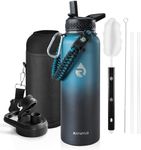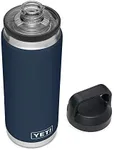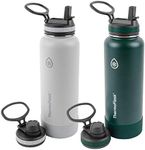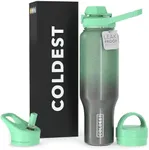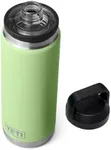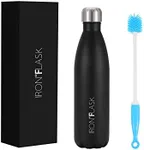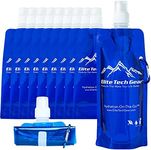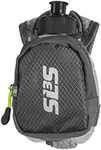Buying Guide for the Best Insulated Water Bottles
Choosing the right insulated water bottle ensures your drinks stay hot or cold for longer, fits easily into your daily routine, and is comfortable and safe to use. Since you'll likely use your bottle daily—at work, at the gym, or on outdoor adventures—it's important to think about how you'll use it most often and what features matter most for your lifestyle.CapacityCapacity refers to how much liquid the bottle can hold, usually measured in ounces or milliliters. This is important because it determines how much you'll need to refill throughout the day and affects the portability of the bottle. Smaller bottles (around 12-18 ounces) are lighter and fit easily into bags, making them better suited for quick trips or kids. Medium-sized bottles (20-32 ounces) strike a balance between portability and hydration needs—ideal for work, school, or the gym. Larger bottles (40 ounces or more) are heavier but excellent for long trips, hikes, or when you don't want to refill often. Match the capacity to how much water you usually drink between refills and how you'll be carrying the bottle.
Insulation TypeInsulation refers to how the bottle is designed to keep drinks hot or cold and for how long. Most insulated bottles use double-wall vacuum insulation, which creates a barrier to temperature transfer. The best bottles keep drinks cold for 12-24 hours and hot for 6-12 hours. If you mostly drink cold water or want to keep coffee hot, look for bottles specifically rated for excellent heat or cold retention. Choose based on whether you want prolonged temperature control or just a few hours of insulation.
MaterialInsulated water bottles are typically made from stainless steel, but you may also find bottles with plastic or glass liners. Stainless steel is durable, doesn’t retain flavors, and is generally safe for hot or cold drinks. Some bottles are lined with plastic or other materials to reduce weight, but these may be less durable or retain odors. Focus on food-grade stainless steel for safety and longevity, and avoid bottles with suspicious coatings or questionable plastics if you're concerned about taste and health.
Lid DesignThe design of the lid affects convenience, spill-resistance, and ease of cleaning. Some bottles have simple screw-top lids, while others have straw or flip-top designs for quick sipping. If you prefer one-handed operation, go for flip-tops or straw lids, which are great for driving or during workouts. Screw-top lids, though, are often the most leak-proof and help maintain insulation. Think about when and where you'll be drinking—at your desk, on the move, or at the gym—to decide what lid style is most practical for you.
Weight and SizeThe overall weight and dimensions of the bottle influence portability and how easy it is to carry or store. Heavier, bulkier bottles can be a hassle to carry all day in a backpack or by hand. Look for lighter bottles if you're on the move a lot, and make sure the bottle fits comfortably in your bag, car cup holder, or the side pocket of a backpack. Match the weight and size to your daily transportation and storage needs.
Ease of CleaningBottles with wide mouths are generally easier to clean and let you fit in a brush or add ice cubes. If you regularly add things like fruit or protein powder, a wider opening will be helpful. Some bottles are dishwasher-safe, which can also make things easier. If you dread cleaning tight spaces, prioritize bottles that come apart easily or have removable gaskets and wide openings.
DurabilityDurability refers to how well the bottle withstands drops, dents, and general wear. Stainless steel bottles with robust coatings are the most durable, while bottles with thinner walls or plastic elements may break or crack more easily. If you plan to use your bottle outdoors or in active environments, prioritize a tough, durable construction. For gentler, indoor use, durability may be less of a concern.




